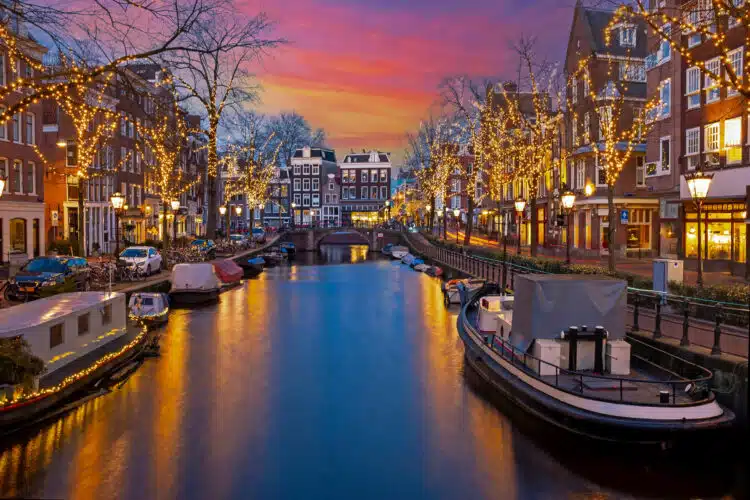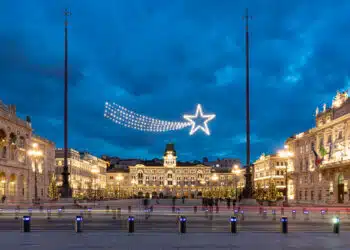Seafarers have, if you like, a little bit of Christmas on board with them all year round. The connection between Christmas traditions and seafaring is older than some might think – even older than the Christmas custom itself.
Among other things, St. Nicholas is considered the patron saint of sailors. His story dates back to the third and fourth centuries AD. As the son of a wealthy family, St. Nicholas was brought up to be a devout Christian. When his parents fell victim to an epidemic, he distributed his fortune among the poor and became a priest.
He later became Archbishop of Myra in what is now Turkey, and from there word of his good deeds spread throughout the Mediterranean countries. Among other things, St. Nicholas is considered the patron saint of sailors because he is said to have appeared to a ship in distress at sea during the Council of Nicaea, now Iznik in the Turkish province of Bursa, in 325 AD and saved it.
St. Nicholas is said to have rescued sailors in distress at sea and even caused storms to subside
The sailors in distress at sea are said to have called upon St. Nicholas in their dangerous situation. A man endowed with miraculous powers is said to have appeared to them, who took over the navigation and set the sails correctly – and finally even caused the storm to subside. The man then disappeared again, according to the Legenda Aurea by Jacobus de Voragine.
When the sailors prayed in the church of Myra in thanksgiving for their rescue, they recognized the saint and thanked him. Because of this and similar stories, St. Nicholas became the patron saint of sailors. After his death on December 6, 326 (or 345, 351 or 365, there is no consensus), the great veneration of St. Nicholas quickly spread to southern Italy, the Mediterranean region and finally to the port cities on the Atlantic and North Sea coasts.
Nicholas is most important in the Netherlands, where there are several churches dedicated to him
In the 12th and 13th centuries, several churches dedicated to St. Nicholas were built in Holland, some of which are still well preserved today. Amsterdam made St. Nicholas its patron saint, and Rome declared December 6, the anniversary of his death, an official holiday. There are still signs of devotion to St. Nicholas in Germany today: the district of Cuxhaven in Lower Saxony, for example, has immortalized St. Nicholas in its coat of arms.
However, St. Nicholas has the greatest significance for the Netherlands. The reason for this is obvious: St. Nicholas is the patron saint of seafarers (and merchants) – traditionally the very professions that have long made the Netherlands important worldwide.

Sinterklaas is more important in the Netherlands than the Kerstman (Father Christmas)
Sint Nicolaas (short Sinterklaas) has a greater significance in the Netherlands than Santa Claus, the Kerstman – although experts are still not quite sure whether Santa Claus and Santa Claus are perhaps one and the same figure – or at least whether one is derived from the other.
Every year, Sinterklaas, accompanied by his helpers and Zwarten Piet (Black Peter, or just Piet/Peter after accusations of blackfacing), travels by ship from Spain – where, according to legend, he survives the year – to the Dutch coast.
On the last Saturday in November, he finally reaches the Dutch port cities. Traditionally, he is greeted with a song by those waiting for him: “The ship, where does it come from? from Spain! On board is St. Nik’laus. We are already very much waiting.
More about Christmas traditions their origin and meaning.













